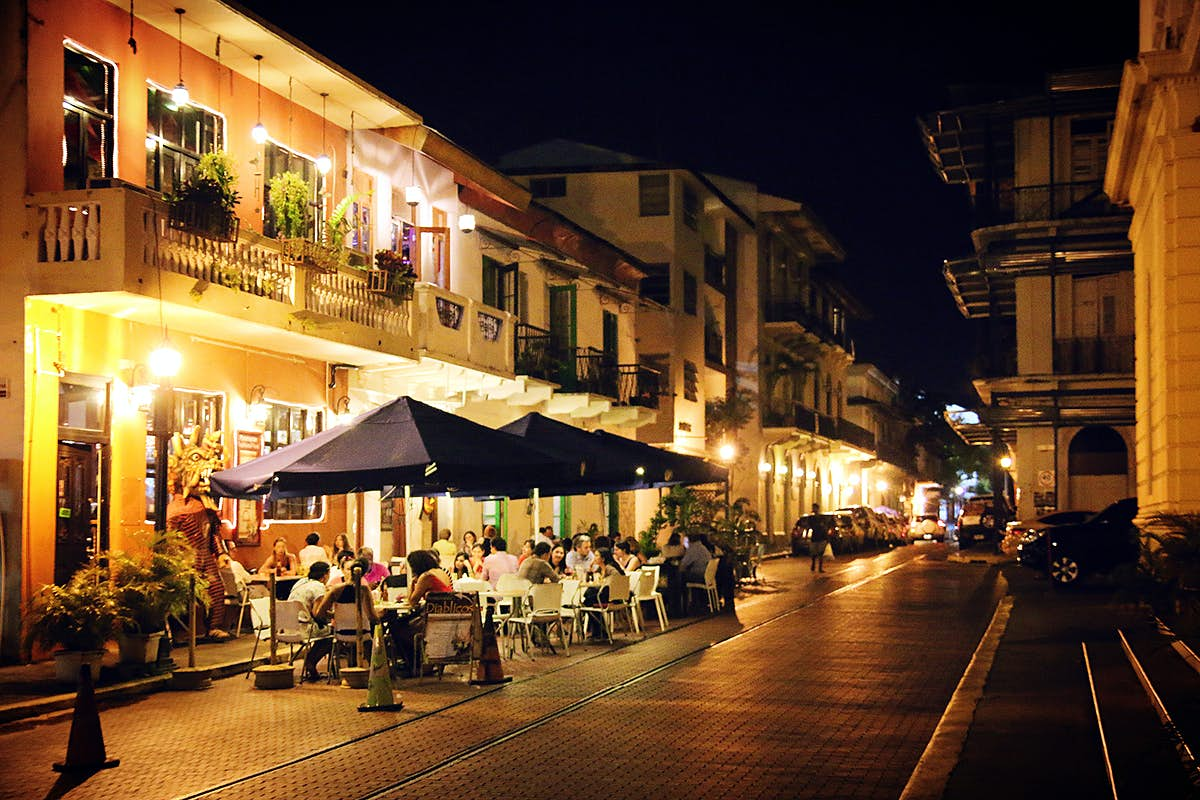
Panama’s abundant natural attributes alone make the Central American country an obvious choice for retirees. It’s hard to argue with lovely beaches, lush green rain forests, and a warm tropical climate. Add in excellent and affordable healthcare and a retirement visa that offers steep discounts to seniors, and the case is even stronger for retiring to the little isthmus nation.
Previously known mostly as the home to its famous canal, Panama has been the pick of an increasing number of retirees from around the world in recent years. In January 2021, when International Living shared its list of the best places to retire around the world, Panama was number two among the top 10 international retirement spots, second only to its neighboring country of Costa Rica.
I could certainly see the appeal on my visit to Panama a few years back. Not only does Panama have easy access to the Pacific and the Caribbean, but it also features coffee plantations in the mountains and the jaw-droppingly gorgeous San Blas Islands.
As I traveled from one end of the country to the other, I came across numerous American retirees out and about, enjoying a leisurely lunch on a shady patio in the quaint mountain town of Boquete or lounging on the beaches on the Pacific side of the country. I remember thinking that those expats might be onto something!
I have yet to get back to Panama to live full time, but the laid-back little beach towns and the charming cities continue to call my name.
From my own experiences, and after consulting with expats already living in Panama, here are nine reasons why Panama is so popular with retirees looking for an international destination.
1. It’s a quick flight from the United States
A flight of around 3 hours will get U.S. travelers to Panama City from a number of major hubs, making Panama a fairly easy trip from the U.S.
Jackie Lange, who moved to Boquete in 2010, told me, “If a retiree is moving from North America, a big advantage is how close Panama is. Panama is only a 2.5-hour flight from Miami or a 3.5-hour flight from Houston.”
I also found that because Panama is on Eastern Standard Time, my trip there and back did not result in the same level of jet lag that I have experienced flying to Europe or Asia.
2. The climate is Ideal
With its location in the southern region of Central America, Panama experiences tropical weather with warm temperatures all year long. If you love the 80-degree range like I do, Panama is ideal. Average high temperatures in Panama City remain in the mid-80s all year, except for March and April, when averages reach 90 degrees.
Lange noted that she spent two years visiting 10 different countries before choosing to move to Panama from her previous home in Dallas.
“I picked Panama because the weather is amazing where I live in Boquete. You don’t need an air-conditioner or a heater. It is lush and green all year,” she said.
However, it’s important to remember that humidity and rainfall come with the tropical climate.
3. There are plenty of Expats
Because Panama already has a good number of international retirees, Lange said that the transition can be smoother for newcomers.
“It’s easier to adjust to a new country when there are many other expats from your country or state nearby,” she said.
Along with providing camaraderie, Lange said the abundance of expats also makes it possible to retire to Panama without speaking the Spanish language.
“Many Panamanians speak English, but some do not,” she said. “In towns where there is a high concentration of expats, English will be more widely spoken.”
I also found that communicating in Panama was fairly easy with just my rudimentary Spanish skills. Many of the younger people I encountered spoke fluent English, and others were willing to try to bridge the gap.
For some people retiring to international locales, the abundance of expats can detract from the authentic experience. Luckily, along with the towns popular with expats like Boquete, there are plenty of choices in Panama that are more remote.
4. There are beautiful beaches and mountains
Even though Panama is small, it offers surprisingly diverse terrain. On the west and south, there’s the Pacific Ocean with its wide sandy beaches and big waves. On the north and east is the Caribbean Sea, with all of the typical tropical features like beautiful sheltered beaches and rain forests. And on the western side near the border with Costa Rica, there are mountain ranges dense with green foliage.
Retiree Denise Hadley said that she and her husband, Gary, recently moved to Nueva Gorgona, a little beach community about 50 miles west of Panama City, after researching places like Belize, Ecuador, and Costa Rica. So far during their time in Panama, they’ve visited the Caribbean destination of Bocas del Toro, where she tried diving for the first time, as well as the mountain town of Boquete.
“Bocas del Toro was our favorite place to visit,” she said, describing it as being “super laid back” with good restaurants and beautiful beaches.
5. The cost of living is lower
Depending on where you’re coming from, the cost of living is likely to be lower in Panama, according to experts. In fact, all of the expats we spoke with mentioned the low cost of living as a major advantage.
Lange, who has lived in Panama for 11 years, said that the cost of living is substantially less than it was in Texas. For example, she had been paying $300 per month for electricity, but she now pays $25 per month. Cell phone service, property taxes, house and car insurance, and food are also less expensive in Panama, she said.
Hadley, who moved from the Portland, Oregon area, said that housing costs are lower as well.
“We are renting a 1,500-square-foot beachfront modern apartment with an amazing view of the mountains and the beach,” she said. “It is $1,400 plus electricity and internet.” In Portland, she said that amount would cover “a mediocre one-bedroom apartment,” not including garbage and water.
James R. said he pays about 60 percent of what he paid in Dallas to maintain the same lifestyle without cutting any corners.
Lange, who offers tours through her company Panama Relocation Tours, said that Panama offers a variety of price ranges — from $200-per-month one-bedroom houses to 5,000-square-foot “McMansions.” Generally, though, the cost of living is less than it is in North America “if you do not move to Panama City or Coronado,” she said.
6. Retirees receive special benefits
Along with the general lower cost of living, retirees in Panama also benefit from the Pensionado Program, a discount system for retirees that International Living calls “the most appealing program of special benefits for retirees you’ll find anywhere in the world today … and the program is open to foreigners.”
In Panama, pensionados, or retirees, are entitled to a number of discounts that go well beyond the senior discounts offered in other countries. For instance, they receive 50 percent off entertainment such as movies, concerts, and sporting events; 30 percent off bus, boat, and train fares; 25 percent off airline tickets; 25 percent off energy bills; 30 percent to 50 percent off hotels; and 15 percent off hospital bills (unless insurance applies).
The program also offers a one-time exemption of duties on importation of household goods of up to $10,000.
“Most retirees get the Pensionado Visa, which only requires a lifetime income of $1,000 per month for one person or $1,250 for a couple,” said Lange. “Yes, you can live in Panama for that!”
The Embassy of Panama notes that visa applications must be submitted in Panama through a lawyer. Depending on the lawyer, Lange said the cost is about $1,500 for a couple to get the visa.
7. Healthcare is affordable
The experts say that even though healthcare is substantially less expensive than what they were accustomed to, it is excellent.
“Healthcare is cheap!” Hadley said, noting that going to the doctor costs $12 per visit.
Lange calls Panama’s healthcare “excellent and affordable,” with most doctors being fluent in English. In addition, Panama expats say health insurance is relatively inexpensive.
8. It’s safe
According to a report from the Overseas Security Advisory Council, a partnership between the U.S. Department of State and the private-sector security community, Panama remains safe when compared to other Central American countries.
The report cautions, though, that crime rates are relatively high in some provinces (Colon, Panama, Herrera, and Chiriqui), with home burglaries being a problem in occupied and unoccupied dwellings.
Still, the people who live in Panama say they feel secure there.
Lange, whose husband died in 2017, said that she regularly walks around town at night and has never felt unsafe. “As a single woman, I feel completely safe,” she said. “I have never had a problem in the 11 years I’ve lived in Panama.”
Hadley agrees. “As far as safety goes, I feel completely safe here. I have never felt the least bit threatened,” she said.
9. The locals are friendly
Even as visitors, my travel companions and I encountered almost exclusively friendly and helpful people in Panama — from the proprietors of the hotels we stayed in to the Guna Yala indigenous people who hosted us at their island in the San Blas Islands to the merchants who sold seafood ceviche at the Panama City fish market.
“Living in Panama reminds me of what life was like living in the United States in the 1960s to ’70s, but with high-speed internet, cable TV, and cell phones,” she said. “Panamanians have strong family values. The country is not divided like North America.”
Even so, as with any big move, it pays for people contemplating retiring to Panama to visit for a time and explore the various regions.
“You have to learn how to relax and enjoy the positive things. Overall, it’s an amazing place to live if it checks your boxes,” said James R.
One con: Expats often find that they can’t get the products they are accustomed to in their new home, and Panama is no exception. Lange said that some familiar items are not available in the towns where people live, requiring them to drive a distance to do shopping. But she noted that ordering from Amazon can often solve that problem.
Pro Tip: A convenient aspect of a visit to Panama from the U.S. is that although the Panamanian balboa is one of the official currencies, the U.S. dollar is also considered legal tender in Panama and is widely accepted throughout the country.
